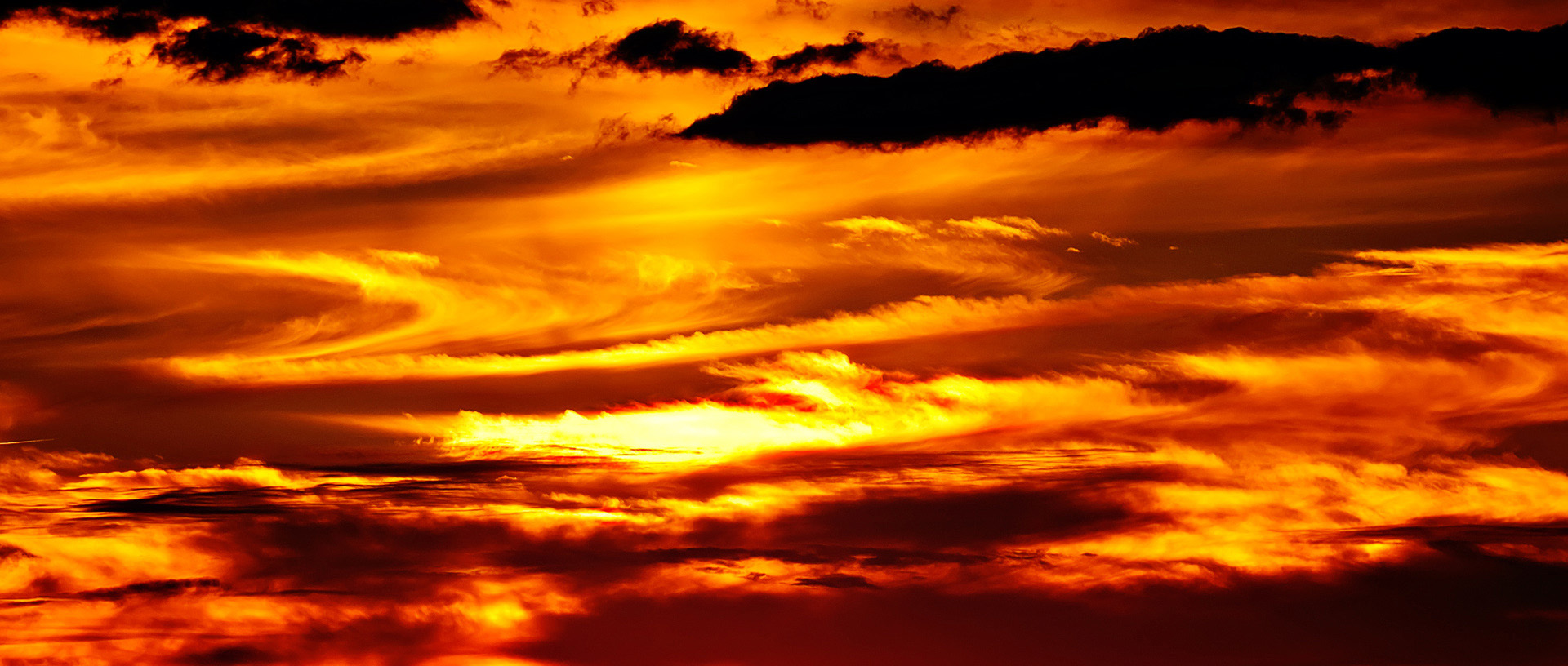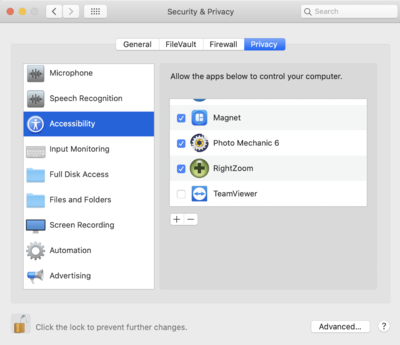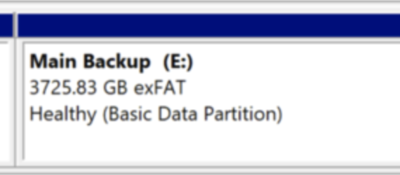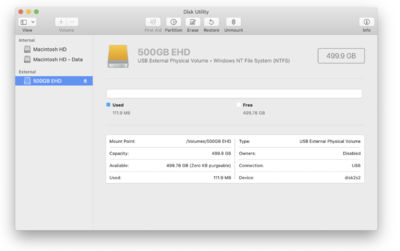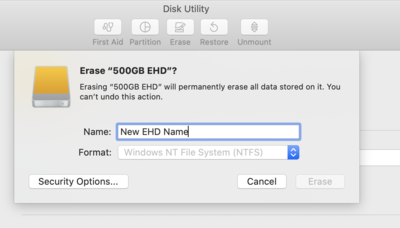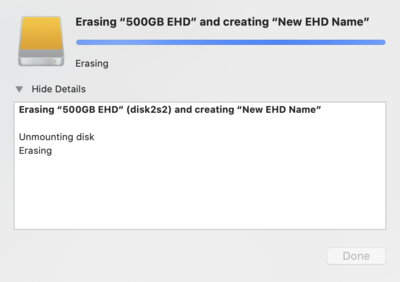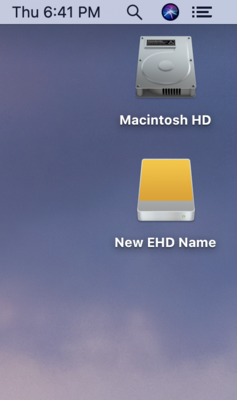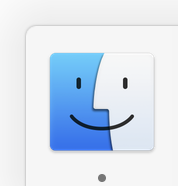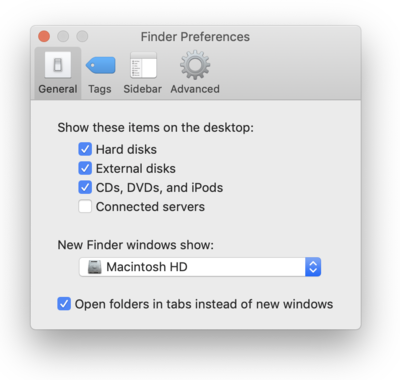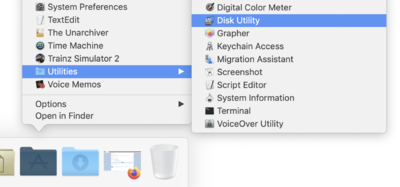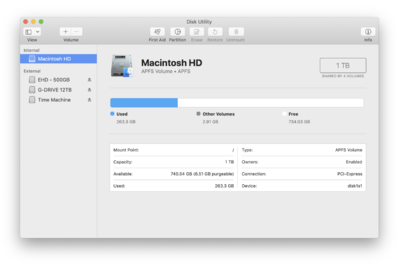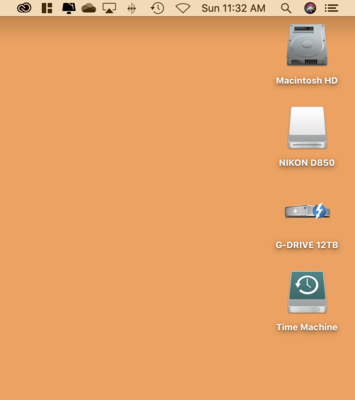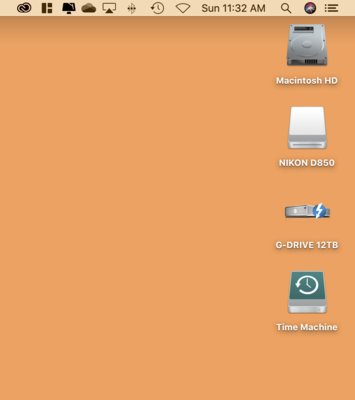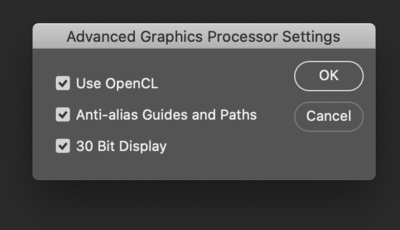-
Posts
4,097 -
Joined
-
Last visited
-
Days Won
51
Everything posted by Brian
-
Should you upgrade? Not with 8.92GB free. The reason you are having problems is the lack of HD space, plus only 8GB of RAM. I hate to say this, but your laptop is very underpowered. I’m sure you did this to save money, but it’s really crippled. Even 2 years ago it was crippled. I don’t think upgrading is going to “fix” anything, but nuking your laptop and starting over might be a possible solution. Since you have such a small HD, nothing but the MacOS and one or two programs can be installed on the main hard drive. You need to be living off of externals, preferably Thunderbolt 3 drives if you have a TB3 port. One more thing. How much crap do you have stored on your Mac Desktop? The more files and folders you have on the Mac Desktop, the slower it runs.
-
Another thing to try is adding Bridge to the "Accessibility" item in the Security & Privacy Section. I know if people update their MacOS, especially with Monterey, this setting sometimes gets defaulted and Bridge/Photoshop/Lightroom start giving you Permissions errors. Basically, you do the same thing as Full Disk Access, unlock the Padlock on the lower left, and then click Accessibility. Then click the + and go find Bridge. There is also a command line we can try to reset Permissions for your Profile, but lets jump off that Bridge when we get to it. (See what I did there? I kill me!! LOL!!!)
-

External hard drive recommendations
Brian replied to Robdonty's topic in The Windows & PC Hardware Forum
Automatically performing backups is a software thing. Unfortunately, Windows does not have a “Time Machine” like Macs do. Say what you want about Apple, but they have backups down to an Artform. Most, if not all, OEM software that comes with HDs is buggy and never really works that well. It’s been this way since the 1990’s. Partitioning… It’s not a huge deal. Takes no more than 5 min tops. Windows has all that you need built in to it. What is happening is that Macs are becoming more popular, so in order to cut support calls, they sell HDs with a Partition type called exFAT. Why? Because both a Windows computer and Mac can read/write that partition type. Sounds like a good thing right? Wrong. exFAT is not as bulletproof as it’s made out to be, and you could lose everything if it ever gets corrupted. Granted, the same thing can happen to a NTFS Windows Partition, but NTFS has been around for a LONG time and is mainstream. exFAT is more like Microsoft’s attempt at a new Partition Type that’s more of a side project; like a programmer was tinkering in their proverbial garage. I am not trusting my data on non-mainstream stuff. Fortunately, it’s easy to rectify this and like I said, takes less than 5 minutes. So when you say backup, what are you exactly meaning? Backing up important folders? Storing images and documents only on an external? Backing up your internal drive? In reality, I just store my documents and images on my main data drive and then copy any really important items to the cloud. If my computer crashes, reloading the OS and software is pretty straightforward; in reality it’s the data that is paramount. People put way too much faith in automatic backup software and never test it to see if it works. They just set it up, but never attempt to verify the data or ever attempt to do a restore. So how are you looking to backup things? -
The MacOS is based on a operating system called Unix (pronounced you-nicks) that dates from the 1970’s. In order to do a file systems check on a HD, it needs to be unmounted first. A Mac computer does not differentiate between a internal hd or external one. That’s why you do not want to go more than 75%-80% full on any HD, internal or external. Before we get into running First Aid and why it couldn’t un-mount, why are you running First Aid? Second, how is this external HD partitioned? Is it the stupid exFAT or is it the MacOS Extended (Journaled). Let me know.
-

Cannot open Lightroom Catalogs after macOS Monterey update
Brian replied to Queen Bee's topic in The Macintosh User Group
Cool Beans!! Here are the current versions of Photoshop CC & Lightroom CC. When it comes to Monterey, you really need to be on the latest version. So up at the top, near the clock is the Adobe Mothership CC Thingy. Click "Updates" in the left column and if you need to, click "Check for Updates" on the right. Get your LR/PS/Bridge/ACR up to date. Plus! I want you to do this: Setting up Photoshop Start from the top and work your way down. -

Cannot open Lightroom Catalogs after macOS Monterey update
Brian replied to Queen Bee's topic in The Macintosh User Group
Refer to the answer in this webpage. It’s the general “Gist” of the procedure that I’m talking about. https://community.adobe.com/t5/lightroom-classic-discussions/unable-to-open-lightroom-classic-after-upgrading-to-macos-monterey/td-p/12516798 -

Cannot open Lightroom Catalogs after macOS Monterey update
Brian replied to Queen Bee's topic in The Macintosh User Group
I think I know what the problem is. It’s not a true “Permissions” issue per se; it has to do with the new built in Security with a modern MacOS. Basically, we need to tell your new MacOS that it’s ok for LR to read / write to folders. One thing to keep in mind, that when it comes to Monterey, you need to be using the very latest of Adobe’s software. So make sure things are completely updated before we go into your security settings. I’m on Catalina, but the steps should be similar. I will post screenshots when I get home tonight. -

Cannot open Lightroom Catalogs after macOS Monterey update
Brian replied to Queen Bee's topic in The Macintosh User Group
You have some serious permissions issues. I guess fill this form out and post the results in this thread. Are you using the absolute latest-and-greatest Photoshop, ACR and Lightroom CC? Adobe just released an update a few days ago. (At least for me.) -
Good!
-
Yippee!!! I'm just glad we caught the exFAT thing when we did. NTFS is the way to go, and no permission errors either!!
-
Alright, I'm just going to save some time. After you select the exFAT Partition Block, then right-click and choose "Delete Volume," the EHD in Disk Management should be a solid black line all the way across. Here is an example of what I'm talking about. Please note! My HD is A LOT smaller than yours. Now for the fun part, creating a new NTFS Partition! Right click on the area that has a black stripe and select, "New Simple Volume." The Wizard should appear, click Next: Specify the Volume Size. For the majority and this example, we will leave it at the default, which is the maximum capacity of the drive. If you are going to create multiple partitions on this Hard Drive at different sizes, I'd use an online calculator tool to create the size you need. For example, if you wanted to create a 6TB partition, you would enter 6,291,456. But to keep things simple, again...leave it at the default and click next. Assign a Drive Letter. This is the spot that you can assign a drive letter if you choose. For example, if this EHD is one that will contain personal files. we could change the Drive Letter to P:\ for "Personal Drive." Again, this is completely up to you to decide. There is no right or wrong answer. If you'd like all of your EHDs to be the "E Drive" (i.e. E:\ ) then change the default to E by clicking the Down Arrow next to the Drive Letter and selecting E. After making your choice, click Next. We will leave it at "D" for this example. You could choose "E" or "H" or even "P," it only matters to you. The next screen is very important. It's the "Format Partition" selections. For today's modern Windows Computers' hard drives that are meant for permanent storage, you want to use NTFS. Some devices like Thumb Drives, you would want to use FAT32. Again, for this example we will leave it at the default of NTFS. The Allocation Size should be left at the default and it is highly recommended that you give your HD a name, to keep things organized. "Data," "Photos," "EHD #2," etc. are all examples. Keep is short and simple. Before clicking Next, be sure to click the check-box next to "Perform a quick format!" Otherwise it will take HOURS to format your HD! Leave the "Enable file and folder compression" UN-CHECKED. Click Next. A Summary Window should appear with your selections. Confirm them if you'd like and click Finish. The Hard Drive will begin the process and Windows will assign it a letter and name. This process should take less than 30 seconds, but this depends on the speed of your computer and Hard Drive. Some complete this task in as little as 5-7 seconds, others take longer. When completed, the Disk Manger should have the drive in the list, along with the name that you chose for the drive: Exit out of the Disk Manger and either use "This PC" or the "Windows Explorer" to use the new Drive. With any new Hard Drive, now is the time to think of a Directory Structure on how you want to organize your Hard Drive. This is completely up to you, but I would take the time and think of how you are going to store stuff, rather than it become a dumping ground for your files/images. Here is one example: You could also keep things very simple, and have folders that are just the year: The sky's the limit! So make your Directory Structure a good one!
-
Delete Volume Now, before you do this, you have everything on this HD backed up / located somewhere else? Because this will nuke everything on that drive. So if you are 100% sure you can delete everything without worry, go ahead and select Delete Volume. You then should have a black stripe all the way across. Post a screenshot when you are done.
-
Yippee!!! Now, if you are looking for an automated program to sync folders/hard drives from one to the other, I recommend Super Duper! Version 3.6.1. But before you get into that, let's just get you used to using a TM Drive and a Main Backup / Data Drive first. Keep things simple.
-

Monitor Replacement Windows 10 Pro
Brian replied to Cindy's topic in The Windows & PC Hardware Forum
Yep. That one will work as well. -
It's good that you have selected the correct drive, now you need to click on the correct area. Right Click on this area, where it says "Main Backup (E:)," then you should see "Delete Partition." Basically, when you right-click on this "Block" or "Section," you will see a list of choices of what do to with the exiting Partition.
-
Huh? 🤪 LOL!! Simplify!!! You like to over-think things, I do this as well, but when it comes to hard drives and your data, you need to take things one-step-at-a-time. First, we need to think about where your files are going and if that hard drive is setup correctly or not. Because rushing in a panic because another HD failed is going to set you up for a catastrophic failure at some point. Clearly with the way your "Main Backup" drive is set now, it's inevitable. So let's disconnect the camera or media card. (That's the EOS_Digital) I just want the new EHD hooked up to your new computer. As I suspected, you have exFAT Partitoned/Formatted HDs. This is what is causing you grief and will ROYALLY F*CK things up in the future. So let's begin... That "Main Backup E:\" which I'm reading should be the "New" EHD, WILL NEED TO BE NUKED AND YOU WILL HAVE TO START OVER! This is why I wanted to make sure of the Partition Type BEFORE you did anything on it. And why you should COPY/Paste things instead of "cut and paste" or move the files. This way we can do things again. Step one: The new "Main Backup," see where it says "exFAT?" This is BAD, but it is fixable. If there are ANY files on that drive and aren't somewhere else, you need to copy them over to a new location because the next step is... Right-Click on that Main Backup Block and select "Delete Partition." I want to see nothing but a black line all the way across, completely empty. When you get there, post another screen-shot. WARNING!! Make sure you are on the CORRECT DRIVE when you do this. This is a one-way proposition. We are deleting everything on that drive and starting over.
-
You need to un-install that damn cloning program!
-
Part 3 First select the EHD that you want to Format for use on the Mac in the left column: Then click the Erase Button at the top: Your Window should appear similar to this. At this point, give your new EHD its official name. Make it something Obvious, like WD 3TB or Client File EHD 3TB. Something recognizable and simple. You can only have so many characters for the name, so keep it short and simple: Then click the UP/DOWN arrows on the right, in the Format Section. If this was originally a Windows EHD, it will more than likely say, Windows NT File System (NTFS): A list will appear as follows: For a Traditional Spinning Hard Drive, ONLY SELECT THE MacOS Extended (Journaled.) DO NOT SELECT the "Encrypted / Case Sensitive" Options! For a Flash Based Hard Drive (i.e. SSD, m.2) choose APFS. DO NOT use APFS for a Traditional Hard Drive! DO NOT SELECT the "Encrypted / Case Sensitive" Options! Again, it's either the "Mac OS Extended (Journaled)" or the plain "APFS." Do not use any other option. For the people that do use those options, have reasons to do so. For the 99.9999% of us out there, including myself, we want to keep our Partition Types as simple as possible. For the majority of users doing this, your new External HD will most likely be the "Traditional / Spinning" type/kind, as SSD/m.2 Drives tend to be extremely expensive for capacities over 1TB. As time goes on, this will definitely change, but for now your Disk Utility Window should look something like this: Simply Click the Erase Button and let the MacOS do its thing: When finished, you might get a message from the MacOS asking if you want to use the EHD for Time Machine or not. If this is a Data Drive, tell it NO! Of course, if this EHD is meant for Time Machine, tell it Yes. If everything goes as expected, and followed all of my instructions, you should see your new EHD mounted on the Mac Desktop: You will also see it as follows in the Disk Utility Module of the MacOS: That's it! That is all it takes to make your Windows Hard Drive and convert it for use on your Mac. Keep in mind that with the MacOS and the way its designed, is it treats both Internal and External Drives the same. So don't go over 75% - 80% capacity on either drive, Internal or External. The more full your hard drive is, the slower your Macintosh runs.
-
The first thing I want you to do, if you haven't already, is turn on the feature that allows you to see HDs and other "Mounted Devices" on your Mac Desktop. Open the Finder. The easiest way is to click the Smiley Face on your DockBar: Then head to the Finder Menu and select Preferences: Once there put checks next to these items and change the bottom to "Macintosh HD" if you want: From there, just click the Red Circle in the upper left corner to apply the changes. After you make this change, things like the Macintosh HD, any External Drives, Memory Cards from Cameras that are in a Card Reader and even portable DVD Disks will all appear on the Mac Desktop. This makes accessing them a breeze and is one of the things that has always puzzled me on why this feature isn't turned on by default. For example: Part 2 First, as you saw in my example above, your new EHD should appear on the desktop, though it may not. Here is an example of currently Mounted Devices on my iMac. You should see something similar if you followed my steps above: Now the fun begins! Let's get that new Hard Drive prepped for use on the Macintosh!! Click your Applications Folder, then open Disk Utilities. Head to Applications Menu >> Utilities >> Disk Utilities. This is where your Disk Utilities might look slightly different. Anyway, here is mine: While in your Disk Utilities Module, please make note of any additional Hard Drives listed in the left column. Pay special attention to the Hard Drives listed under the "External" Section. For this process, it is much safer to only have one EHD Mounted / Listed! It is imperative that you Eject and Remove ANY EXTERNAL HARD DRIVES THAT YOU DO NOT WANT TO ERASE!!! Your Disk Utilities Window should appear as follows, with only ONE External HD listed: You can Eject the EHD from Disk Utilities, just click the little up-arrow/line next to the drive you want to remove. Continue on to the next page in this thread >>>>>>>
-
Yeah, that usually happens when you copy a file that was on a NTFS Drive and moved to another format, like FAT. You will see this a lot if copying stuff to a thumbdrive. Nothing bad will happen per se, it's just that the file properties will be lost if copied back to a NTFS. So before putting anything on this new drive, we need to make sure WHAT partition type it has. If it's an external hard drive and you are using Windows, IT NEEDS TO BE NTFS and not FAT32 (Unlikely) or the stupid exFAT that Manufacturers are using. Worse yet, using Manufacturer's software that "Preps" the drive for you also screws you up. All you need is the Windows Disk Management App that is built into Windows. Right-Click on the Start Button, select Disk Management and with the new EHD installed, take a screenshot and post it here. I wanna see how that new drive is setup.
-
If you do end up going with a M1 Mac, you will need to be using the latest-and-greatest version of Photoshop CC. No PS CC2019 for you. CS6? Ha! Forget it.
-
I wouldn't worry about it that much. It has to do with the cluster sizes and how the data is stored on the drives. Unless the two drives were completely identical, and you had a dramatic size difference, then I'd be worried. But you copied a 8TB Drive to a 12TB drive and things are a little different? That's a typical thing to happen.
-
But that's not IPS. I hate the "It's just as good as..." way of thinking. No, it is not. You can buy and external IPS screen and use that to edit on. But I know, "Portability!!" "I can't be chained to my Desk!! I MUST BE FREE!!!" or "I need to edit by the Pool or in the Car on my way to Vacation / Holiday!!" Yes, I've heard ALL of these before and the members were dead serious too.
-
What I would do 1st: Simplify!!! Let's take Carbon Copy Cloner out of the equation. Stop trying to Automate things at this point. You need a solid foundation before using programs that do that sort of thing. You have a brand new EHD, yes? We need a place to copy your existing files to but make sure that drive is a MacOS Extended (Journaled) Partition Type. We do NOT want exFAT! After you get all of the files copied to the new EHD, and your files placed in folders that are organized (now is the time to do this,) you are going to completely delete ALL Partitions off that WD Drive (Honestly, I want Carbon Copy Cloner gone from your system, it's going to get in the way,) then.... Create a new MacOS Extended (Journaled) on the WD EHD via the Disk Utility. When it's done formatting, it will ask you if you "...want to use it for Time Machine?" TELL IT YES! Then Time Machine should start and do a first backup. This first one takes awhile. Go watch Netflix or something. I'm honestly not worried about the old Time Machine Backups Unless you are, in which case you could copy those files to the new EHD and put them in a separate folder. Make sure the TM drive (the old WD drive) comes up as "Time Machine" on the Desktop. If you don't have the HD on your Mac Desktop, let me know. After you have a dedicated Time Machine Drive and now a dedicated Data Drive, you then can think about doing Automated things with Carbon Copy Cloner. What you do not want to happen is have Carbon Copy backup your Data Drive to the Time Machine Drive. Time Machine only needs to backup the Macintosh HD. IF you have things get dumped onto the TM drive, bad things will happen. Time Machine Drives need to be all by themselves, dedicated backing up the internal "Macintosh HD." If you want a clone of your DATA drive to another Data Drive to be kept off-site, you need to purchase a 3rd EHD and have the Data Drive Clone to the Off-Site Data Drive. Make sense? I think this is the source of your problems, you need more EHDs than you think you do. For your situation, you need at least 3: One dedicated TM Drive and Two Backup Data Drives, with one being the clone of the other. Now, you do not need to spend another $500 or whatever on the off-site drive, it just has to be at least the same capacity or slightly larger. Since all you are doing is cloning the main Data Drive weekly at the very least, it's not a "Production" drive, it just holds data off-site in case of a major disaster. Now if you don't want to go this route, that's fine...then don't bother with the Cloning Program. Just save directly to the Data EHD. Keep things simple.
-
Yeah, Adobe changed things on me, I need to update that article. This is what mine looks like: Try it. If it doesn't work, or causes issues, you can always change it back. This is the real secret on how I fix things; I poke around. LOL!! Honestly? I would actually bring it to a Genius Bar, have them Nuke the HD and install a fresh MacOS. But I'm thinking now with the current Macs, you should be able to delete the existing partition, then re-install a fresh MacOS. If you are still having problems after the fresh install of the OS, I'd return the Mac. Or if you are running out of time you might want to contact Apple about returning things. One thing I'd like to point out: Do not mention the Crucial RAM!!! Apple will have a "Field-Day" and blame everything on the Crucial RAM sticks. Mouse battery died? Oh...that's the Crucial RAM causing issues. Mac won't power on because it's unplugged? Oh...the Crucial RAM caused that! Apple's Tech Support needs to tow the company line. Even though Apple buys their RAM from Micron, who are the ones that make Crucial's stuff, because it doesn't have a stupid sticker with an Apple Logo, it's the Crucial RAM's fault.

